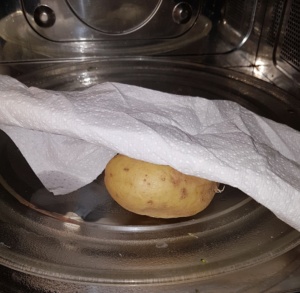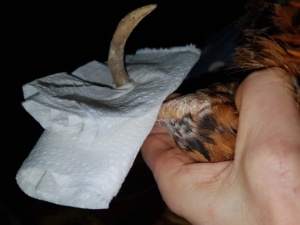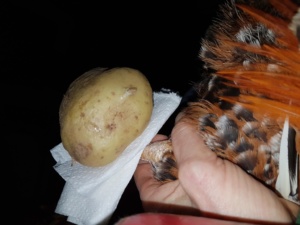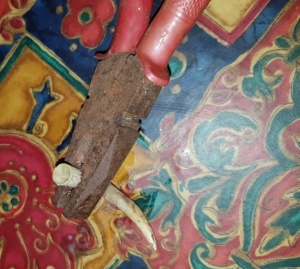Remove spurs for male’s comfort and hen’s safety
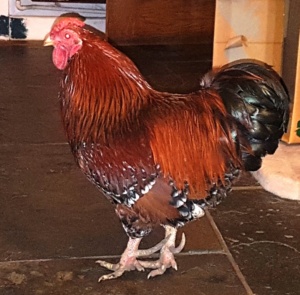
There are different ways to shorten spurs. This is how I do it. I like the fact that it doesn’t hurt, it’s very quick and doesn’t stress the bird and produces the best looking results looking just like a young bird’s spurs.Using a potato to shorten cock’s spurs.
All cockerels have spurs that just continue to grow, Sometimes the just break off of their own accord but mostly they become too big and ungainly, can make roosting uncomfortable for the male and can result in the male seriously damaging the female when they mate. So it is important to keep spurs trimmed for the cockerel’s comfort and the safety of is hens. The easiest way to do this is to use a potato.
Quick, clean and simple
It sounds a bit worrying but the cockerels don’t find it painful and it’s safer, less painful and easier than the alternatives. The old spur is similar to our finger nails, it’s just unfeeling layers of horn. There is a little blood supply between the layers but it isn’t sensitive.
Before and after shortening with a potato
This shows a millefleur Wyandotte male with long dangerous spurs before treatment and nice, neat, safe spurs after removing old growth.
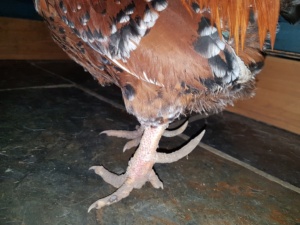
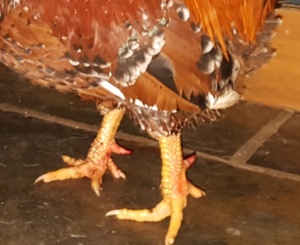
You will need
- One or two large-ish potatoes
- Three or four sheets of kitchen roll
- Pliers, square nosed are best but even wire cutters can be used,
- Fold up kitchen roll sheets to make thick pads and make a spur size hole through them.
- Chose a potato that’s big enough to cover the spur and cook it in the microwave, just as you would if you were going to have microwaved baked potato, about 6 minutes on full power.
- Thread kitchen-roll pads over the first spur and place over the spur to protect leg from heat.
- Sit the bird on your lap. Place hot potato over spur. ( You will need to place some folded kitchen roll over the potato to protect your hand.) Using a timer, keep it there between and one and a half to two minutes depending on thickness of spur/size of bird, then remove.
- Now do the same on the other spur, remember to protect leg with pads. Either reheat potato or use another newly cooked potato. Remove.
- Using the pliers firmly clamp hold of the first spur just above where the kitchen roll pads were. Now gently, but firmly try to wiggle/rotate the spur and it will become loose and slide off the new small spur underneath. It will probably have a slightly wet blood stained look but that’s normal and nothing to worry about. Now repeat on the second spur and hey presto you have a cockerel with nice neat young-looking spurs.
I keep the bird indoors in a clean box until the new spurs have dried,
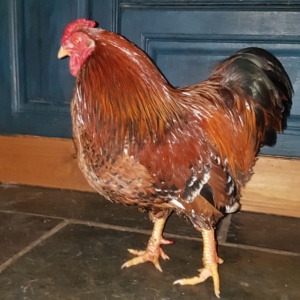
7. Let the potato cool and feed it to the chickens as a treat – though nowadays legislation says you can only feed food to chickens that has come from a completely vegan kitchen!

